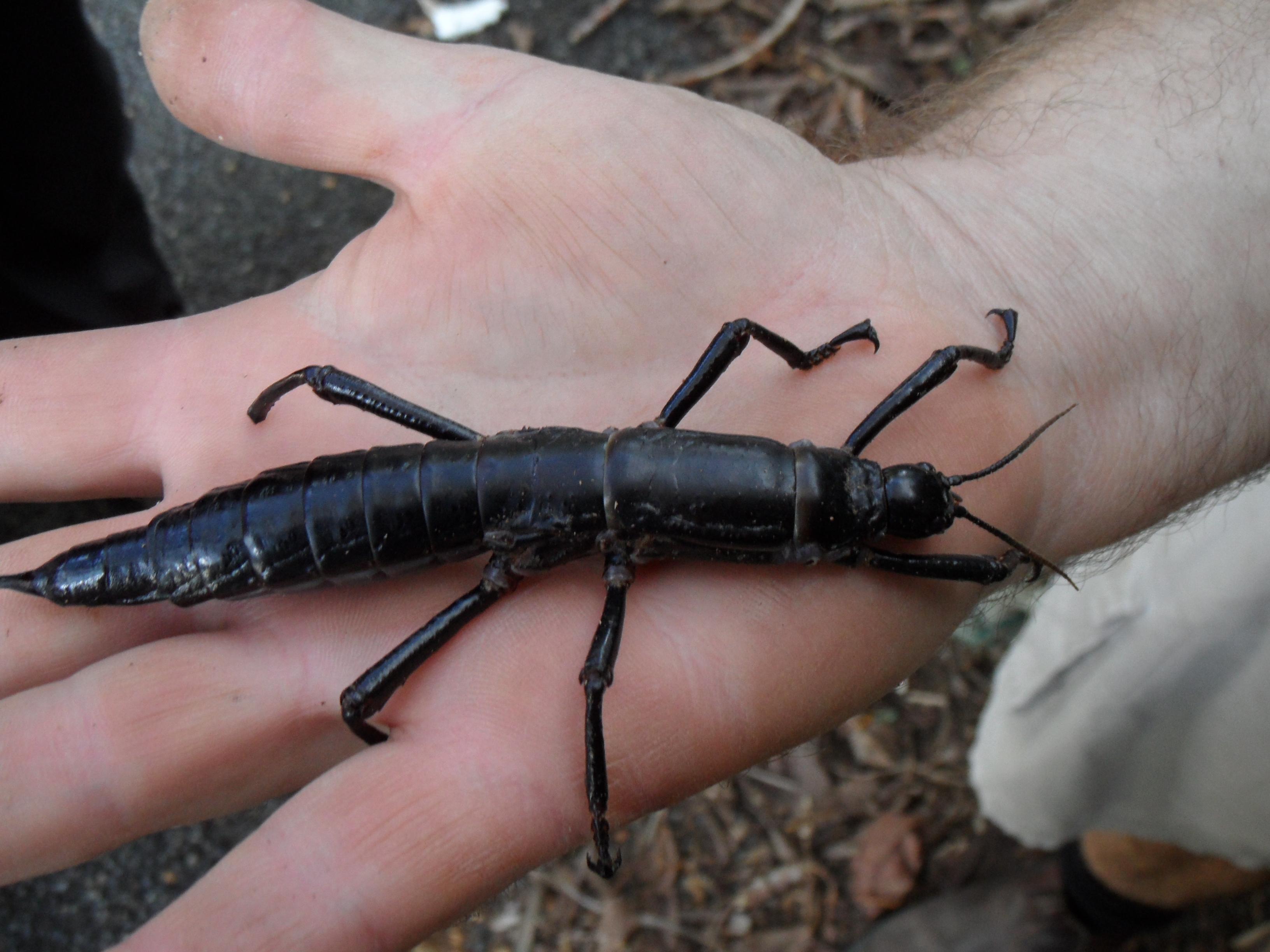Tree Lobsters are actually not lobsters at all. Nor are they crustaceans. They are actually just insects with a similarly shaped exoskeleton. But that’s not what makes them interesting. What does, is that Tree Lobsters have seemingly come back from extinction.
The Species, originally from the Lord Howe Island in the Tasman Sea between Australia and New Zealand, went extinct during the 1920’s due to becoming the main food source for an invasive rat species that came onto the island. The Tree Lobsters were only formally declared extinct in 1960 though. Since then scientist had pretty much forgotten about them.
Thus, when scientists found a small group of stick insects similar to Lord Howe Tree Lobster’s on Ball’s Pyramid, a volcanic stack 12 miles away from Lord Howe Island, in 2001, they were quite surprised. The Ball’s Pyramid stick insects were skinnier and darker but scientists were still hopeful the newly discovered insects were, in fact, the same species as the extinct Lord Howe Tree Lobsters. Scientists tested the genes of the stick bugs from Ball’s Pyramid with genes extracted from preserved Lord Howe Tree Lobsters and found out that despite some morphological variance, they are still the same species. They speculate that diet, age, and environment had caused the Ball’s Pyramid Stick Insects to look a little different. How the species got to the volcanic stack is still a mystery as the insects cannot swim but they infer that they had been carried over by birds.
The newly discovered Tree Lobsters are now being bred at the Melbourne Zoo and elsewhere in an attempt to reintroduce the species to Lord Howe Island. However, the invasive rat species on Lord Howe Island still remains a problem as it threatens the lives of over 70 different native species. In order to successfully reintroduce the Tree Lobsters back to Lord Howe, the rat problem needs to be taken care of first.




mikeochondria
I would just like to extend my previous comment and add a link which I found was relating to this topic and would be an interesting read for anybody else interested in the reemergence of the Tree Lobsters: https://sciencealert.com/the-lord-howe-island-stick-insect-once-declared-extinct-lives-again
mikeochondria
I think this is definitely a revolutionary discovery. The fact that they were thought to have gone extinct and then were later re-discovered displays the true perseverance that life itself has. Getting rid of the rat infestation needs to be a priority for the people of Lord Howe if they ever want to get their native “Tree Lobsters” back home and replenished to how they once were.
celliswallier
Hey Sgagliotide,
While this may be a weird statement, this seems like a very Tasmanian thing to happen. Tasmania is famous for its unique species, many of which are now extinct, like the tree lobsters were. But like the tree lobsters, there’s always some doubt as to whether something is really extinct. The Tasmanian Tiger was declared extinct in 1936, but sightings still seem to pop up a lot in the forests of Tasmania. Here are two similar examples from four years apart of reports of Tasmanian Tiger sightings and the search to see if they still exist.
https://www.theguardian.com/environment/2017/mar/28/tasmanian-tiger-sighting-search-thylacine-queensland-australia
https://www.theguardian.com/world/2013/nov/11/zoologists-on-the-hunt-for-tasmanian-tiger-declare-no-doubt-species-still-alive